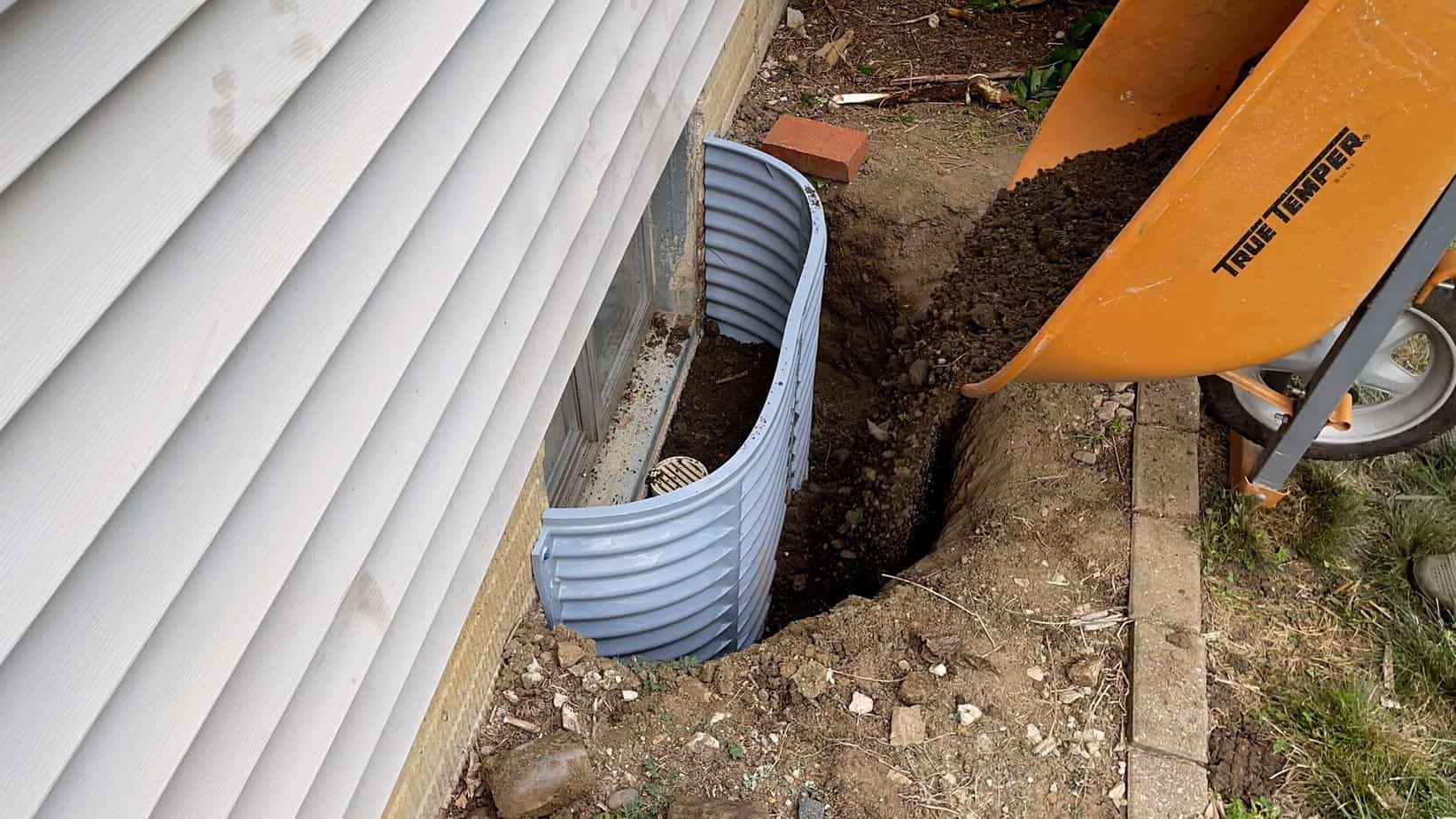If you’re thinking about replacing a window well for the first time – it’s a great DIY project with super functional rewards. It will not only prevent dirt from falling on the window and water from flooding your basement, but it also provides ventilation and natural light. The best part: it only takes about 2 and half hours and costs about $100.
For me personally, we were doing a little landscaping around the house and putting in a concrete patio, so it was a good time to freshen up two different window wells. They were corroded and poorly installed, so they looked pretty bad!
I decided to use a plastic, non-metallic window well with a flat front as opposed to a rounded front. Additionally, I added a translucent cover that had some structure to it, so it can sit on top and carry some load, while also letting light into the basement.
In this blog, I’ll walk you through the steps of replacing a window well. This involves digging out the old window well, lining up your new one, securing it to your foundation, getting everything back to grade, and making sure your drain is good to go on the inside of the window well.
Rather watch than read? Check out this 11-minute video.
Tools and Parts Used:
- Trench Shovel
- Post Hole Digger Bar
- Hand Rake/Cultivator
- 1/4″ x 1 3/4″ Tapcon Screws
- 3/16″ Masonry Drill Bit
DISCLAIMER: This blog contains affiliate links, which means that if you click on one of the product links, I’ll receive a small commission.
How to Install a Window Well Replacement – 5 Steps
1. Dig out the old window well
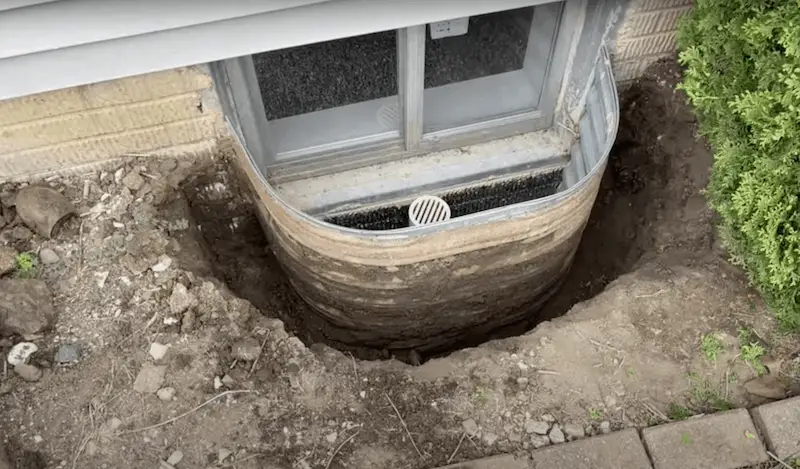
I dug everything down to the base but left a little extra dirt in because I will be filling around it. For my situation, the drain was correctly positioned two to three inches below the window sill. So if water was accumulating in the window well – it would go through the drain as opposed to wanting to come through your window and into the basement.
Also, before you start digging, make sure you call 811 – the national “call before you dig” number. You want to make sure you’re not going to have any issues with digging near a cable box, gas line, etc.
2. Remove old fasteners
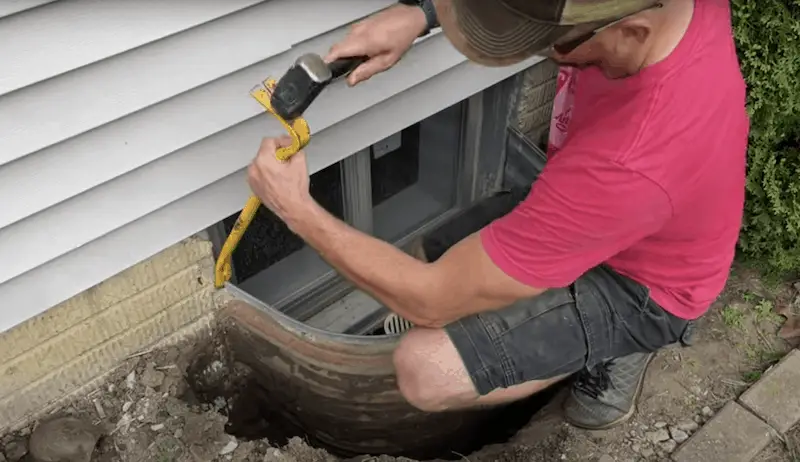
To pry off the window sill – you’ll need to remove any old fasteners. Sometimes this process can be a bit lengthier than you think – at least for me, I had to trim the tree to get some extra room to remove them. Additionally, an oscillating tool with a metal blade can be your friend making small cuts in the old window well to help remove it from your foundation wall.
3. Make a game plan & start setting your new window well
You’ll need to have a hammer drill handy with a 3/16 masonry drill bit for this step if you use Tapcon concrete screw anchors like I did to secure the new window well.
Since I had enough room to start setting my window well, I first set my right-hand side of the top and secured it to the foundation. I used ¼” by 1 ¾” long Tapcon concrete screw anchors after drilling my pilot holes with the 3/16 masonry drill bit.
Knowing roughly where you want the top of your window well, secure it in place with 1 screw. Then take your level and level everything up. At this point, once you know your window well is level – go down and take measurements on the inside.
My window well is plastic, so it does have a little bit of flex to it. But I still had to make sure I had a consistent width of the window well all the way down. To check this I measured to ensure consistent width on the inside of the window well at the top, middle, and bottom. And you want to make sure it’s snug to the wall and doesn’t have any gaps in it.

Common Question: How do you find the depth you need to drill with your hammer drill and your 3/16″ masonry drill bit?
- Take your measuring tape and the hammer drill, and measure 1 3/4″
- Do one sharpie mark on the drill for reference at 1 3/4″. Then take that sharpie marker and run the drill slowly – making a mark around the drill. This will give you a nice reference line for your depth gauge (Go to minute 6:17 in the video to see this process!)
While you’re drilling into the foundation itself – you don’t want too big of screws that will go too deep into your foundation.
Just make sure the screw doesn’t bottom out when drilling in the Tapcons! If they do, Go back and forth just to pull the material out of the hole and drill another 1/4″ then. I’d also recommend putting a galvanized washer so that you have a little bit more head and don’t pull through the flange on the window well.
Warning: Be careful not to over-tighten the Tapcons! You can strip the hole out if you try to over-tighten it. If you do this you will probably be heading back to the home improvement store for larger Tapcons and a masonry drill bit.
4. Set the new window well in place
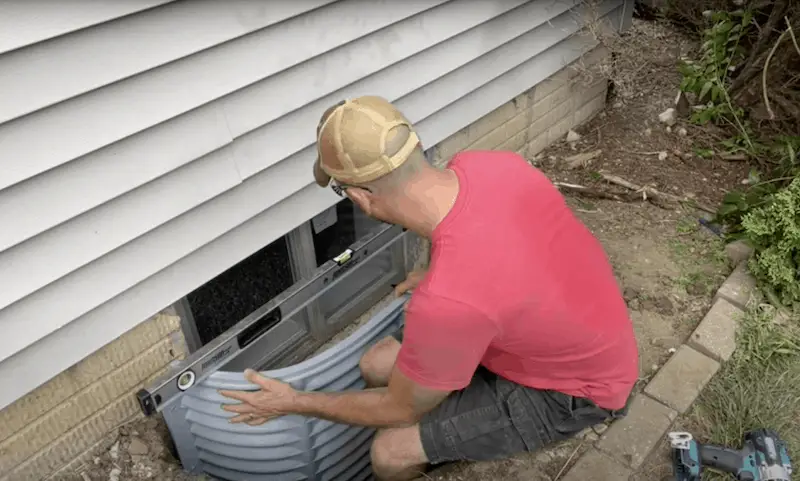
Double-check the level after drilling the other side. Then, drill in at least two more holes on each side. If it’s good to go, that’s all you need to do to secure the window well.
5. Add the final touches & backfill
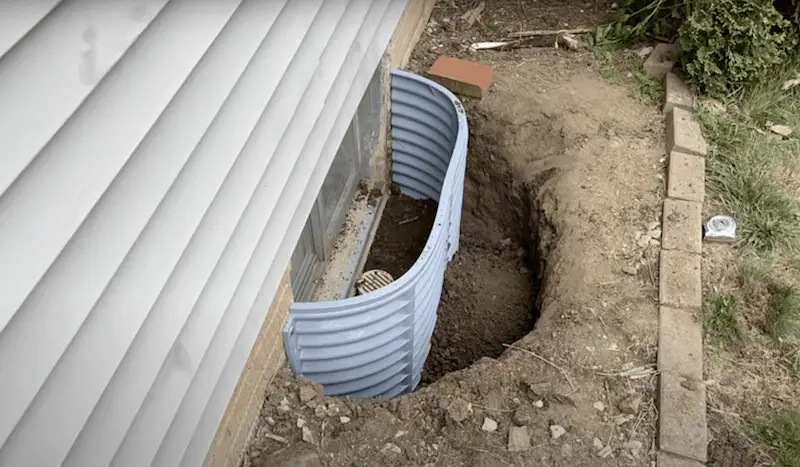
Finally, you’ll build up a little dirt in the base and put some white rock down getting it right up to the drain level. From there, go ahead and backfill in the rest.
The Wrap Up
Overall, I was super happy with the end product and I think this is a perfect DIY project. Again, it takes about 2 and a half hours and you should expect to pay about $100, which is likely a lot cheaper compared to hiring someone to do it.
One lesson: the translucent cover is a load-bearing one, so you can actually step on it. It didn’t fit perfectly for me. I probably should have fit the cover to the window well prior to securing the window well to the foundation – but even with that I probably would still have to modify it a bit to get it to fit. It’s not a huge deal but just something to keep in mind if you want the cover I used. Do some reference dimensions and some dry fits ahead of time before you’re securing it to the wall to know exactly what you’re facing.
